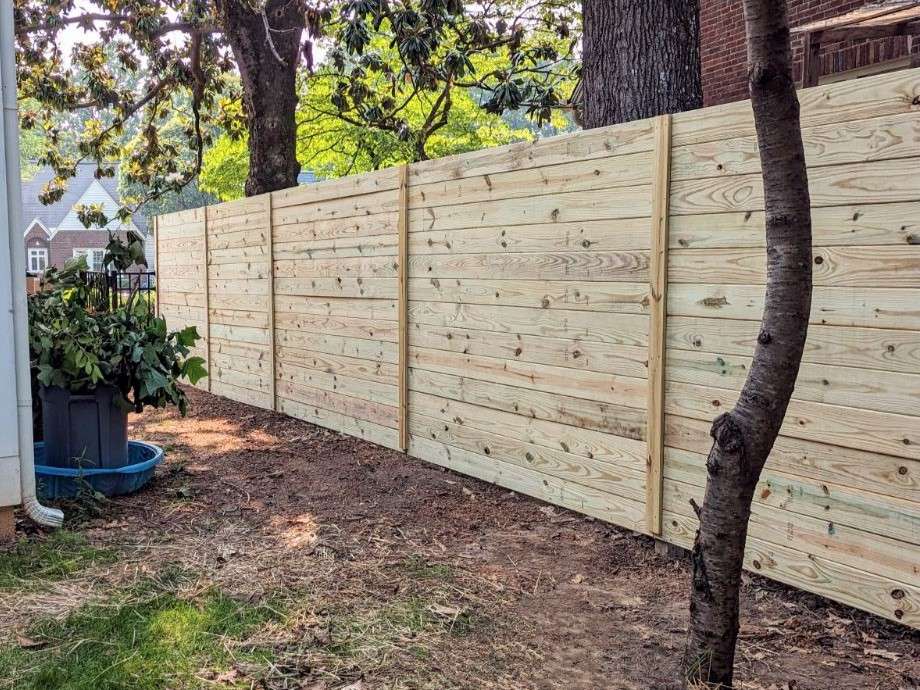All Categories
Featured

When considering installing a fence on your residential property, one of the most important steps is to understand whether you need an authorization. Fencing installations frequently call for a permit to guarantee that the structure abides by regional zoning laws, building codes, and safety standards. The details permits required can vary relying on your place, the type of fence you intend to install, and the height or positioning of the fencing. Below's an overview to aid you browse the procedure of obtaining a fencing license and make certain that your setup is lawful and convenient.
Why You Required a Permit for a Fencing Installation. A fence permit is needed to guarantee that the installation fulfills local policies. The permit procedure assists neighborhood authorities verify that your fencing does not interfere with website traffic exposure, respect your building lines, or breach elevation constraints. It additionally makes sure the safety and security of the framework, so it doesn't present a threat to you, your neighbors, or the public. Mounting a fencing without a permit can result in penalties, removal of the fence, or hold-ups in building and construction, so it's vital to examine whether a permit is needed prior to starting your project.
Types of Authorizations You May Require. There are a couple of common kinds of permits you could require for a fence installation:
Building Permit. A building license is one of the most usual authorization required for fencing setups. This authorization ensures that the fence meets safety standards and is created according to regional structure codes. A building permit is normally needed if the fencing goes beyond a specific height (frequently 6 feet), is constructed from specific materials, or lies near a public pathway or road.
Zoning Permit. A zoning license may be needed to validate that your fence abides by neighborhood zoning laws. Zoning regulations can dictate where a fencing can be positioned on your building, how high it can be, and whether it is allowed specific locations (such as along residential property lines or in front yards) For instance, some communities have guidelines limiting the elevation of fence the front yard to guarantee visibility for chauffeurs and pedestrians.

Setback Permit. You might need a problem license if you are building a fencing near your residential or commercial property line or close to a road. A setback describes the distance a structure, consisting of fences, should be from the residential or commercial property line. Problem guidelines vary by area, and making certain that your fencing is placed appropriately can avoid conflicts with neighbors and avoid violations.
Home Owner Organization (HOA) Approval. If you stay in a community governed by a House owner's Association (HOA), you may require approval from them in enhancement to regional permits. HOA rules commonly cover the type of products, height, design, and shade of fencings. Even if your neighborhood government doesn't require a license, your HOA might still have particular standards that require to be complied with.
How to Apply for a Fence Permit. To look for a fence license, you'll require to contact your neighborhood structure division or planning workplace. The application process usually includes filling out a type, paying a fee, and sending a website plan of your building that shows the proposed area of the fence. You may likewise need to include details regarding the materials, elevation, and layout of the fence.
Sometimes, a local official may need to evaluate your residential or commercial property prior to accepting the permit. When the authorization is granted, you will certainly be authorized to continue with your fencing installment.
When Is a License Not Required? In certain situations, a license may not be called for. These situations can include:
Low Elevation Fences: In lots of locations, fencings that are below a specific elevation (often 3 to 4 feet) might not need an authorization, particularly if they are placed in the yard or various other non-visible locations.
Fence Replacement: If you're replacing an existing fencing with the same elevation and product, some areas may not call for a new permit.
Non-Obtrusive Fencings: Ornamental or momentary fencings, such as those utilized for horticulture or landscaping objectives, might not call for licenses as long as they are not irreversible and reduced.
Nevertheless, it is necessary to get in touch with your regional zoning office or building division, as regulations can vary by jurisdiction.
Repercussions of Not Getting a License. Failing to get the necessary authorizations can result in considerable consequences. These include penalties, required elimination of the fence, or perhaps hold-ups in building and construction. In addition, if your fencing doesn't satisfy neighborhood regulations, you can encounter legal problems with neighbors or local authorities.

Verdict. When mounting a fencing, it's vital to look into the permit needs in your area. By making sure that you adhere to neighborhood policies and obtain the required licenses, you can prevent pricey mistakes and make certain that your fencing is legally certified. Talk to your local building department, HOA, and zoning workplace to identify what licenses are required for your particular fencing job. This action is important to protect both your investment and your residential property's worth.
Latest Posts
Check Out the Best Auto Repair Coupons in Montclare, Chicago
Published en
1 min read
Secure Your Financial Investment with Specialist Seamless Gutter Setup
Published en
1 min read
How Chicago Drivers Trust Montclare Auto Repair for Trusted Service and Great Savings
Published en
1 min read
More
Latest Posts
Check Out the Best Auto Repair Coupons in Montclare, Chicago
Published May 24, 25
1 min read
Secure Your Financial Investment with Specialist Seamless Gutter Setup
Published May 20, 25
1 min read
How Chicago Drivers Trust Montclare Auto Repair for Trusted Service and Great Savings
Published May 20, 25
1 min read